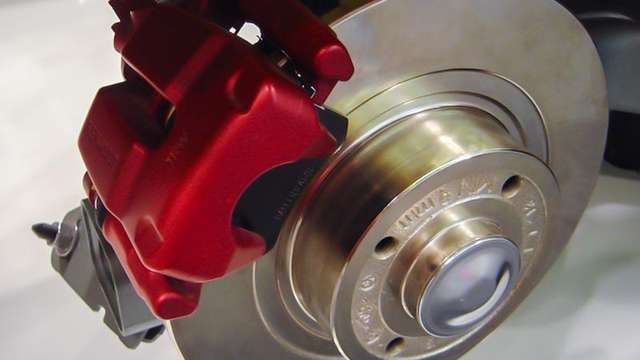- brakes
What to check when your brake warning light is on

Updated 27 Aug 2019
Joel Ilton

The braking system is one of, if not the most, important parts of your car’s safety system.
This system not only allows you to slow your vehicle down, but is a critical component of the other safety systems featured on newer vehicles, such as traction control (TC) and emergency stability control (ESC).
The brake warning indicator can switch on for a number of reasons including:
- A failed or burnt out brake globe
- A possible malfunction of an ABS sensor
- Brake pads that are low on material
- Low brake fluid in the reservoir
- A stuck or failed park brake sensor
Most modern cars are fitted with ABS and numerous other safety features, designed to help prevent an accident when the unexpected happens.
Vehicles with ABS usually possess two warning lights, one for mechanical problems and one for ABS system malfunctions.
If the ABS warning light is on, it may be possible to continue to use your car, without the operation of the ABS system.
If you experience a brake warning light appearing on your dashboard, you should, when safe to do so, pull over and carry out some basic inspections, as driving with this light on may mean your brakes will not allow you to stop when required.
The first, and most basic check, is to see if the handbrake or park brake is still on.
Even if it is raised only one click, it will cause the brake warning light to come on. This could be a simple fix and you can continue on your merry way.
Next, check the brake fluid level. When the brake fluid is low in the reservoir, it will bring the brake warning light on.
There are many reasons why your brake fluid level could be low. It may be that your brake pads are worn down.
As the brake pads wear, the fluid in the reservoir is displaced, as it takes more fluid to move the brake pads towards the brake disc.
Some vehicles are also equipped with brake pad wear sensors.
When the brake pad material is close to completely worn out, the sensor will turn the brake warning light on, to let the driver know that it is time to check and replace the brakes.
Your brake fluid could also be low if you have a fluid leak.
This is the more serious of the two scenarios, so once you have topped up the fluid, pump the brake pedal a few times to circulate the fluid, and then recheck the level.
If the pedal feels spongy or goes straight to the floor, or the fluid is down again, check underneath the vehicle for fluid leaks.
If you notice a puddle under the vehicle, do not drive – call a tow truck and have the leak repaired.
Another simple check that should be carried out when the brake warning light comes on is to check the brake lights on the vehicle.
It is possible that one or both of your car’s brake lights have failed.
With your vehicle off, simply place something heavy to hold down the brake pedal, or get a friend to press the pedal down while you check your rear lights.
If one or both of the brake lights are out, replace the globes and double check the brake warning light has switched off.
If all these checks do not result in the brake warning light switching off, it’s time to have a mechanic check over the vehicle to determine what the cause is.
It is recommended that you do not drive your vehicle, and have it inspected by an auto electrical specialist as soon as possible, to diagnose and rectify the issue and make sure your vehicle is safe, both for your family and other motorists.
Now, imagine a seamless segue here…
Right. AutoGuru lets you search, compare and book from over 1600 qualified mechanics across Australia. Boom!
Image credits: Brake light raymondclarkeimages; Brake Project LM

Written By
Joel Ilton
Finding a passion for cars from a young age, Joel carried out work experience as a mechanic whilst at school before starting an apprenticeship after finishing year 12.
Joel is now the Workshop Manager at Robina Volkswagen.